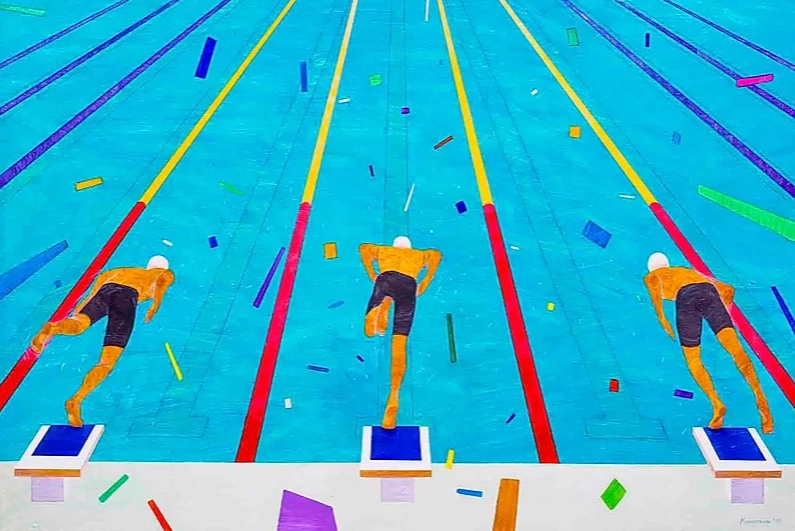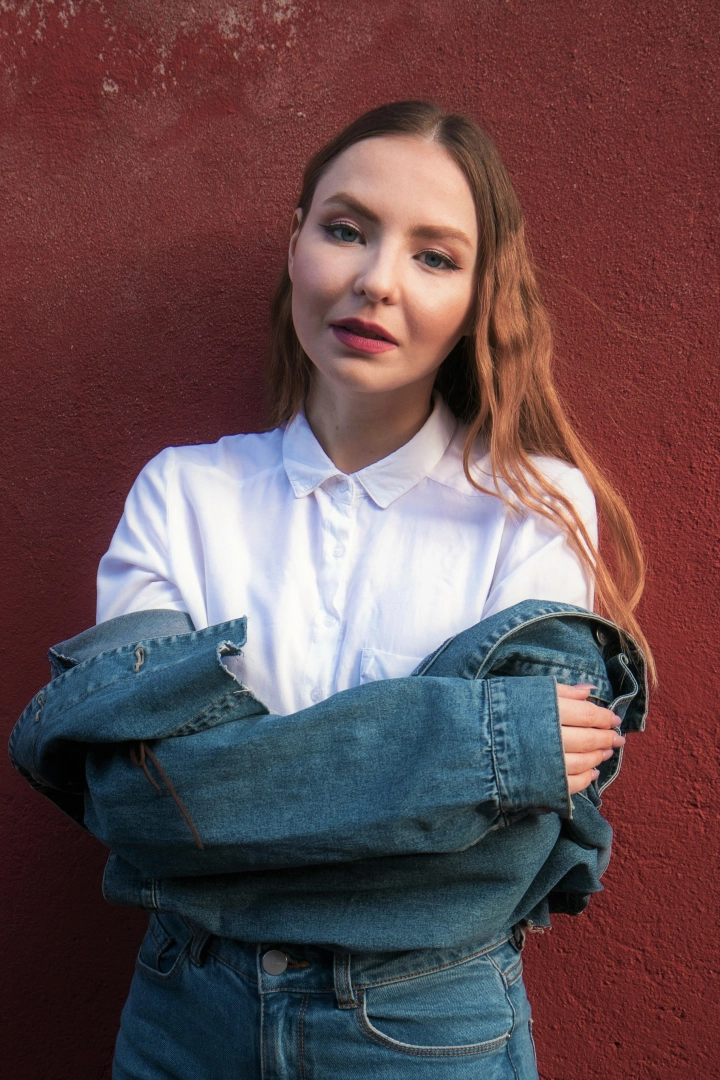Athletic performance can often be viewed as a work of art. Sporting disciplines, such as ice skating, are reminiscent of artistic performances. Some people like to drain their soul along with their body when exercising and there are also those who prefer art over sports. Some, and there is a lot of us, love both. And then there are artists who manage to make sport a part of their artworks’ composition, creating a beautiful connection between these two worlds. One such artist is Kirill Kipyatkov. If you are intrigued by a world full of striking colours, shapes and a unique depiction of sport and athletes, we encourage you to keep reading.

Kirill Kipyatkov - art and sports packed with colour
Kirill Kipyatkov (1987) is a Russian artist living and working in St. Petersburg. His work focuses on people, specifically athletes and their various sporting activities. His works are always precisely titled to encapsulate the given athletic sphere.
He has created a wide range of artworks with sporting topics titled Colors of Sport, including works such as Diving (2015), Horse racing (2015), Hockey (2016), Golf (2016), Football (2016), Skateboard (2018), or Tennis - 2 (2018). In his work, he uses primarily oil painting and acrylics.

Kipyatkov’s art combines figural and abstract elements. He captures motion, fast-moving bodies, and colourful elements in space. He toys with perspective and colours. "It’s his liberalisation of colour that is an important and frequent feature of 20th-century abstract art." (Kirill Kipyatkov "Colors of Sport" www.luchgallery.com).
He often uses only one colour to cover large surfaces, and they are usually bright and vibrant, having the same energy as the athletes. It’s almost as if his works exude endorphins, similarly to sports where they are created to reward our sweat and hard effort. "Kirill is not just mirroring the visible reality but also uses his own means. Intuition and personal values he brings into the sport play a big role in his art.." (Kirill Kipyatkov "Colors of Sport" www.luchgallery.com)
In his artworks, Kipyatkov substitutes common, real objects with colourful elements and geometric shapes. He uses interesting perspectives, for example, in Basketball we get to see the players and the basket from a bird’s eye point of view. People become a homogenous mass rather than individual beings, and facial details are often omitted entirely. Strong colours and his expressive portrayal of characters are inspired by socialist realism.
As he says: “With my specific paintings, I’m trying to show the world I live in.”
Socialist realism - can it be considered a relevant historical art form?
Socialist realism emerged in the USSR before the second world war in the countries of Central, South-Eastern and Eastern Europe. The art form was meant to illustrate the positive aspects of socialism.
What actually is socialist realism? The people who were in power back in those days wanted everything to be clearly defined, even art. But defining art is not that easy. Art, as well as beauty and love, are concepts that have escaped definition by both philosophers and artists since time immemorial.
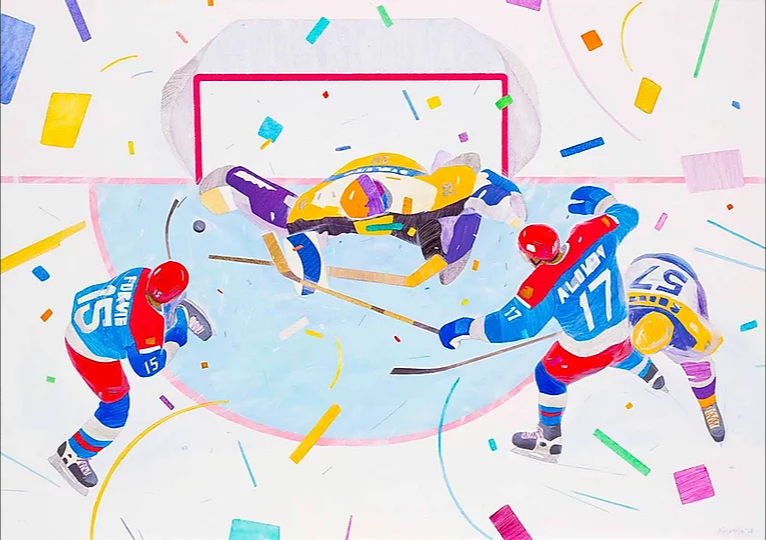
Daniel Vražda asks the same question in Deník N: "Was socialist realism a mere destruction of thinking, personality, art, the victory of ideology over imagination, a political construct, a state-governed prostitution, a tool for manipulation, a harmless PR tactic of the former regime, or maybe a little bit of everything?".
Art historian Sabina Jankovičová claims that socialist realism has never been clearly defined. Formally, it was striving for realism while it was actually idealist. She says: "Communists wanted to have an officially defined art form but that never happened. They wanted a realistic form which was merely an illusion, a certain scale of topics which were simply propaganda."
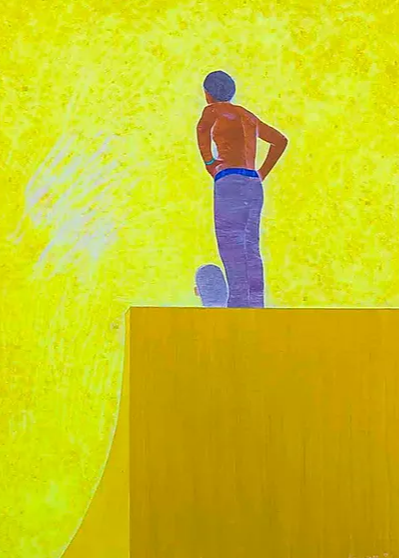
Kipyatkov’s art, however, takes the good parts from both of these worlds. Several decades later when artists are relatively free to create without the pressure of the regime, he was able to derive whatever he needed from this art movement. Only so much to inspire him and to leave the darker aspects of socialist realism in the past.
Kipyatkov’s characteristic art
Kipyatkov has been exhibiting in the Moscow LUCH and RAY galleries since 2010. His first solo exhibition (2011) titled Colors of Sport took place in St. Petersburg. Since then he has exhibited in Moscow, Sochi, Kazan and Switzerland.
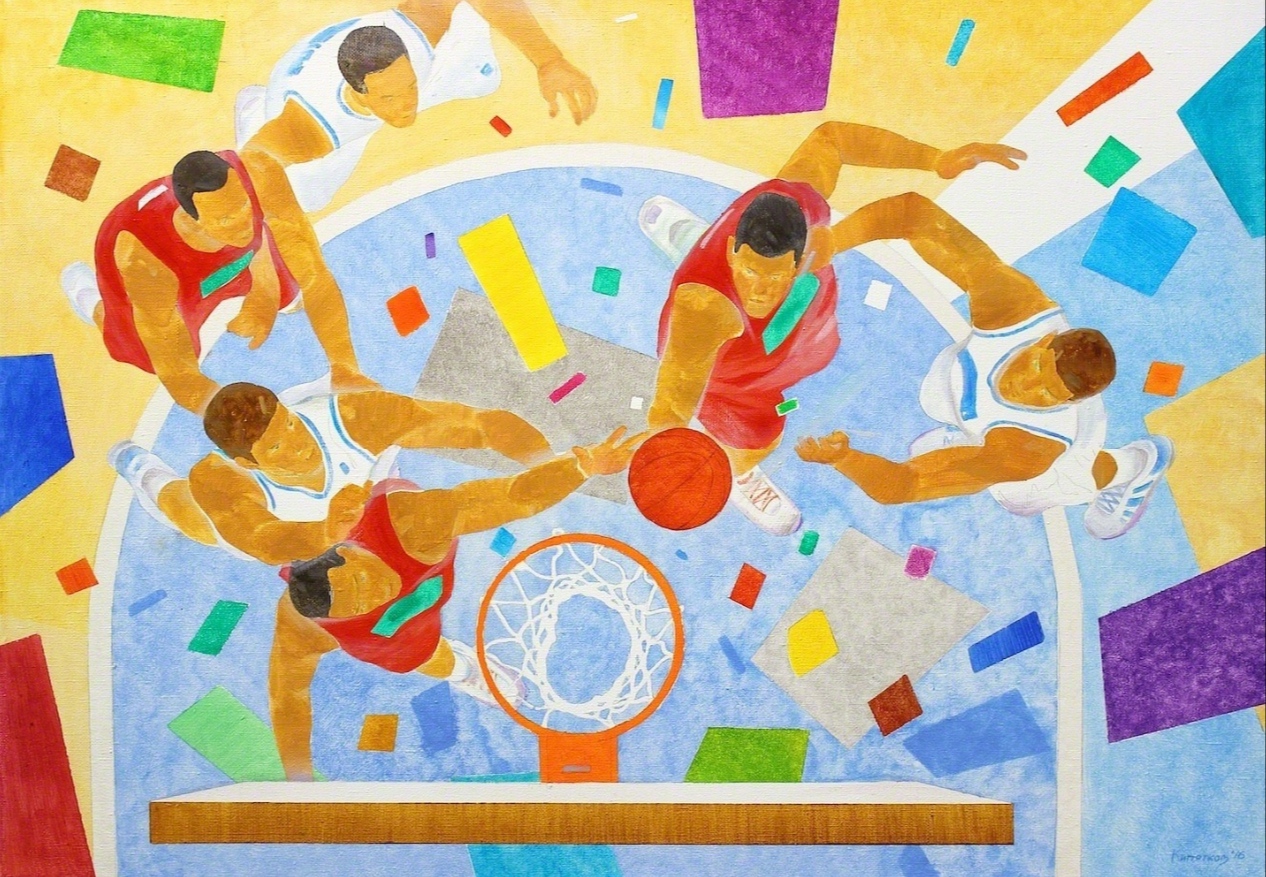
His most famous series is titled Colors of Sport. It depicts athletes' and sports’ beauty, power, health, energy and joy. His other series include Sea, Reflexive, Agriculture, Railways, and the Grey Series. He focuses mainly on capturing sports which for him is also a personal topic. However, we can also find depictions of machines, ships, and aeroplanes, for example in works such as Ships, Towing, Airplane in the Sky or humans taking part in various non-sporting activities: Dreams, Splash. His early work includes topics revolving around childhood in more abstract and digital forms: Childhood, Memory of Childhood or Children of Rain.
-pngkirill.jpg)
